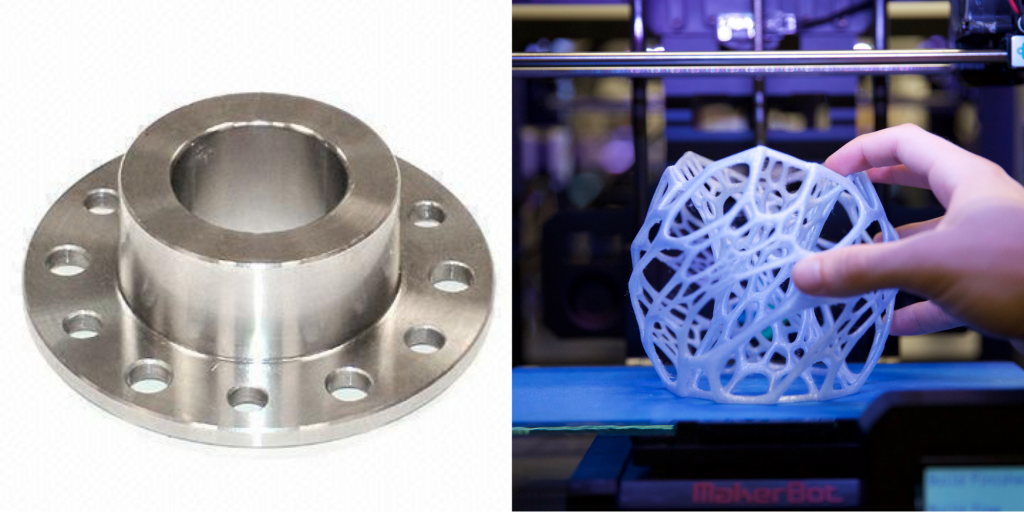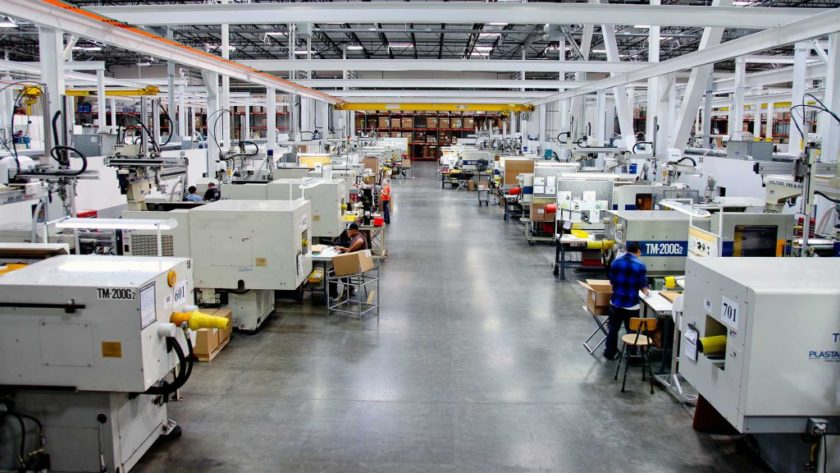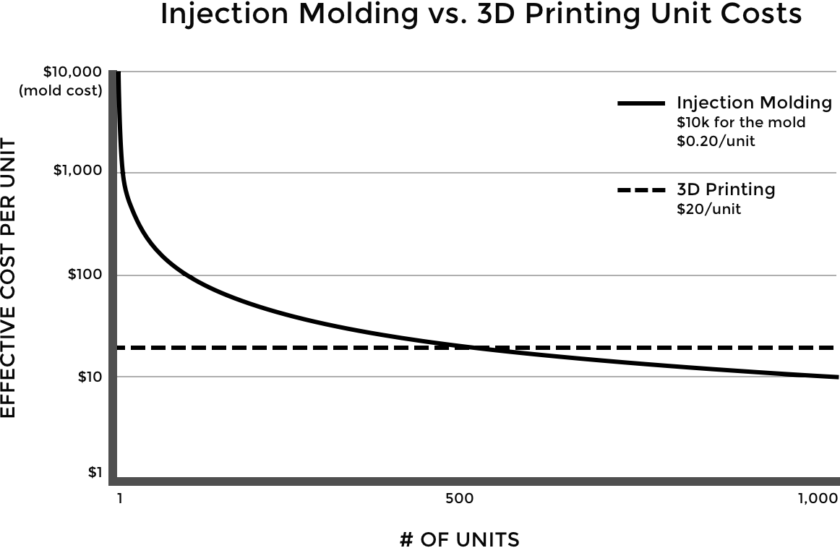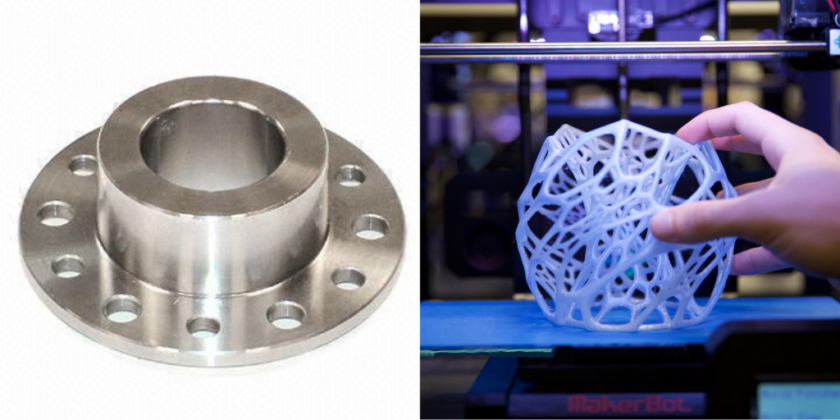
Voodoo Manufacturing’s Jonathan Schwartz lays out what to consider when you’re considering 3D printing for your business.
So you’re launching a physical product. Maybe it’s just a simple object, maybe it’s a hardware product with integrated electronics, or maybe it has mechanical functionality. You’ve built one (or probably many) prototypes, you’ve launched a successful crowdfunding campaign in order to manufacture your first batch, and now you need to do just that.
This is the point at which many entrepreneurs run into trouble – how do you scale from 1 to 1,000 units? Or 10,000? Maybe even 100,000 if you’re lucky. There are many factors to consider when scaling your manufacturing, but one of obvious concern is the method with which you’ll create the physical components for your product.
So how does someone go about choosing the right method that will scale along with his or her business? Here we’ll explore the pros and cons of two popular types of plastic part manufacturing: injection molding and 3D printing.
Background
When focusing on plastic components and products, there are traditionally few manufacturing methods available, the oldest and most common being injection molding. While injection molding has dominated the manufacturing landscape for decades, new techniques, such as 3D printing, have begun to gain traction by offering an alternative at costs competitive with injection molding for low-volume runs.
Unfortunately, there is no single manufacturing method that is perfect for every part and situation. As you’re thinking about creating a new product or scaling up the production of an existing one, it’s critical that you take special care to understand the advantages and disadvantages associated with both methods.
Injection Molding

Injection molding is one of the oldest high-volume manufacturing processes, wherein a molten material (such as a thermoplastic) is injected into a metal mold. Once injected, the thermoplastic takes on the mold cavity’s shape, is cooled, and is ejected as a solid part.
Injection molding is typically used for producing high volumes of the same object. For instance, if you’re looking to manufacture 100,000 pairs of identical plastic sunglasses, injection molding would be a great way to go about doing that.
The method does have its pitfalls, however. First, there is a large upfront investment involved in making a mold. Molds can be reused to make hundreds of thousands, if not millions of parts, but can cost anywhere from a few thousand dollars to over $100,000. As a result, there is an inflexibility that comes with needing to create a new mold for every new or modified part. That said, injection molding is a complex but powerful process that has been the go-to solution in the plastic part manufacturing market for years.
3D Printing

3D printing, or additive manufacturing, is a 30-year-old technology that has picked up a lot of steam in recent years. Unique to 3D printing is the process of adding material together to create the end part. This is opposed to cutting material away, like in milling, or reshaping it, like in injection molding.
There are many benefits inherent to this process, such as the ability to produce completely custom parts with virtually no upfront cost. With 3D printing, rather than needing a new mold for every new part, all you need is a new digital file. Additionally, 3D printing is capable of producing shapes that are impossible, or very uneconomical, to produce with any other manufacturing method.
Like injection molding, 3D printing also has its downsides. Today, many 3D printing processes are expensive, slow, and may produce parts that are not up to industry quality or material standards.
So, what process should you use to manufacture your parts – 3D printing or injection molding? When considering both methods, deciding between the two can become rather complicated and case-specific.
Considering Unit Cost & Order Volume
As previously mentioned, the prerequisite to injection molding any part is creating the mold itself. Mold costs vary greatly, but the cheapest ones typically start at around $5,000. Once you have a mold, the cost to make each unit is very little considering it really only includes the plastic used (which is very cheap), and perhaps a tiny bit of labor. This means that the upfront cost of making a mold gets amortized over your production run; with each additional unit you produce, the unit cost decreases since the initial mold cost is being spread across another unit.
3D printing is a different animal. Because 3D printing is a digital manufacturing technology, there is virtually no upfront cost to making a new part. At the end of the day, 3D printed part costs can be attributed mainly to material cost, manufacturing time, and labor. All of these are more expensive for 3D printers than for injection molding, but again, without an upfront mold cost the barrier to entry is a lot lower.
So, looking purely at unit costs, which method is more economical? There is always a point at which injection molding becomes more price competitive than 3D printing. Today, this point is usually somewhere between 1 and 10,000 units for parts that could be made to satisfaction with either method.
The figure below shows the relative unit cost for runs of the same theoretical injection molded and 3D printed part, plotted logarithmically. This model assumes a mold cost of $10,000 with each injection molded unit adding $0.20 of material cost. It assumes the 3D printed unit cost for the same part to be $20/unit for any run volume.

This logarithmic graph shows the theoretical unit cost for the same part manufactured separately with 3D printing and with injection molding. Using 3D printing, the unit cost remains at $20, regardless of the number of parts produced. Using injection molding, a $10,000 mold must be made prior to making the first unit. From there, each unit can be made for an additional $0.20, thus making the effective unit cost equal to $0.20 + $10,000/# of units produced. From the above graph, we can see that due to the upfront mold cost with injection molding, it only becomes the more cost effective production method if you are producing more than 500 units.
Other Considerations
Outside of unit cost and order volume, there are other considerations that come into play when choosing between injection molding and 3D printing:
Complexity – Whether an object is organically shaped or has ultra-sharp edges, its type and degree of complexity can help inform which manufacturing method you choose. Ultimately, you should choose the method best suited for making what you’ve designed. When thinking of “creative” or organic shapes as complexity, 3D printing wins. When thinking of hard engineering constraints and tolerances, injection molding [ed. note: most often] wins.

Production Time – Production time is typically determined by the manufacturer’s capacity and and the size of the production run. The many steps required to get something into production can factor into this timeline, from sourcing a manufacturer, to making a mold, to quality control, shipping and eventual delivery. You should always consider the manufacturer’s location, steps to getting to production, and guaranteed delivery time.
Iteration & Change – As with all competitive products and services, being able to iterate often and maintain agility is key to innovation. If you’re at the beginning of a long product development journey, spending a few thousand dollars on a mold that cannot be changed will most likely slow down your innovation cycle. However, if you’re at a point where your focus is scale and repeatability, then injection molding may prove to be more fitting than 3D printing.
Into the Future
As we look towards the future we’re seeing exciting developments within the realms of both 3D printing and injection molding. These advancements are making it easier and faster to get things made, and will hopefully lower the barrier so that more and more people can make the products they dream up.
Next time you find yourself on the journey to get something manufactured, consider the above factors and make the decision that will increase your chances of success in bringing a new product or part to life.
Looking to explore what 3D printing can do for your business? Get in touch with the Shapeways for Business team.


You forgot to mention the best-of-both-worlds solution: creating an injection mold by using 3D printing. The 3D-printed mold can be used to produce about 100 units at least at the cost of injection mold-produced units.